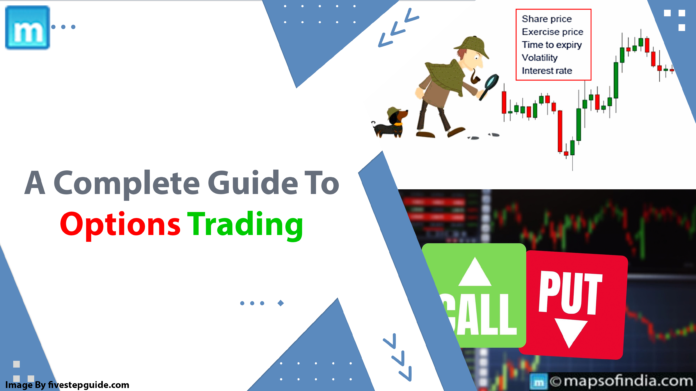Options trading has long been considered a valuable instrument for investors seeking to diversify their portfolios and increase returns. While it may appear unsettling at first, knowing the principles of options trading may open up a world of possibilities for both experienced investors and newbies. This article examines options trading, its benefits, how to get started, and some basic strategies to consider.
What is Options Trading?
At its core, option trading is the purchase and sale of contracts that grant the holder the right, but not the duty, to buy or sell an underlying asset at a predetermined price (known as the strike price) within a specified time frame. These underlying assets may be equities, commodities, currencies, or indices.
Types of Options
Call Options
Call options allow the holder to purchase the underlying asset at a fixed price, known as the strike price, before the expiration date.
Put Options
Put options allow the holder to sell the underlying asset at the strike price before expiration.
Advantages of Options Trading
Leverage
One of the main benefits of option trading is leverage. Options enable investors to control a more prominent position with less capital. This can boost possible returns, but it’s crucial to remember that it also raises the risk.
Versatility
Another benefit of options is their flexibility. Unlike stocks, which may only be bought or sold, options provide a wide range of techniques for profiting from market conditions, such as bullish, bearish, or neutral.
Risk Management
Options offer a built-in risk management tool due to the possibility of limited loss. When purchasing options, the maximum loss is equal to the premium paid.
How to Get Started
Educate Yourself
Before you start trading options, you need to learn the business fundamentals, such as terminology, tactics, and risk management techniques.
Choose a Broker
Choose a trustworthy brokerage site that provides option trading services. Ensure that the platform delivers enough instructional resources and analytical tools.
Open an Account
Sign up for an options trading account at your preferred brokerage. Fill out the appropriate documentation and fund your account.
Practice with Paper Trading
Many brokerage systems provide paper trading accounts, allowing you to practice trading options with virtual money before investing real money.
Start Small
Start with small, manageable positions until you’ve mastered the mechanics of option trading and developed a profitable approach.
Options Trading Strategies
Covered Call
This strategy involves selling call options on an underlying asset that you already hold. It earns money by selling call options and receiving premiums while also offering downside protection.
Long Straddle
In a long straddle, a trader buys a call and a put option with the same strike price and expiration date. This kind of approach wins from substantial price changes in both directions.
Iron Condor
The iron condor is a strategy in which you sell both an out-of-the-money call spread and an out-of-the-money put spread. It benefits from a sluggish market with low volatility.
Strangle
Like the straddle, a strangle involves purchasing an out-of-the-money call option and an out-of-the-money put option. However, the striking prices differ. This approach earns from massive price changes, regardless of their direction.





